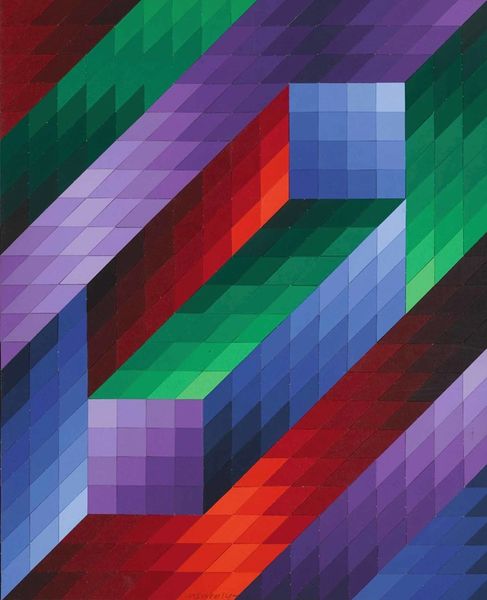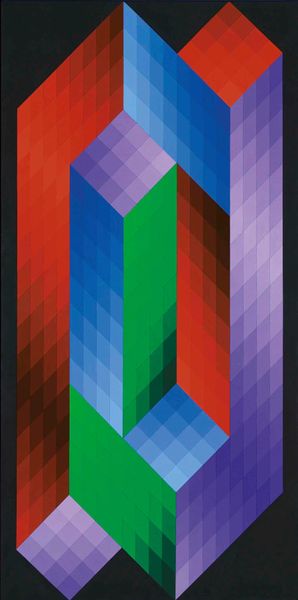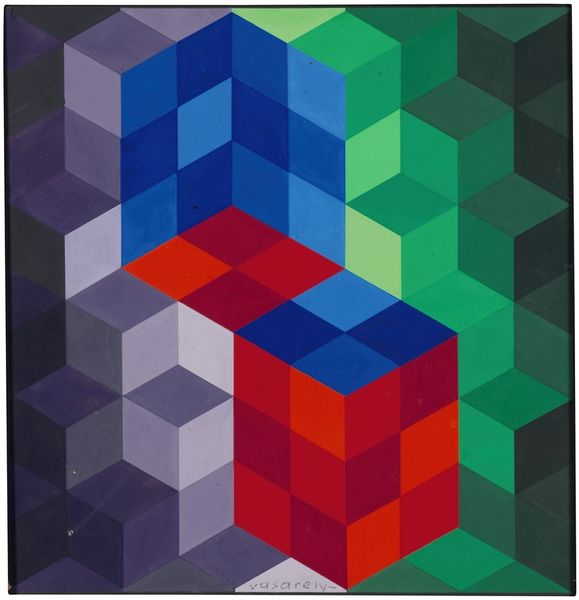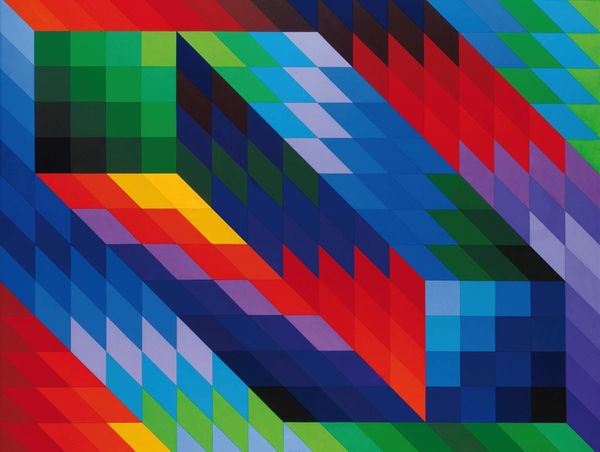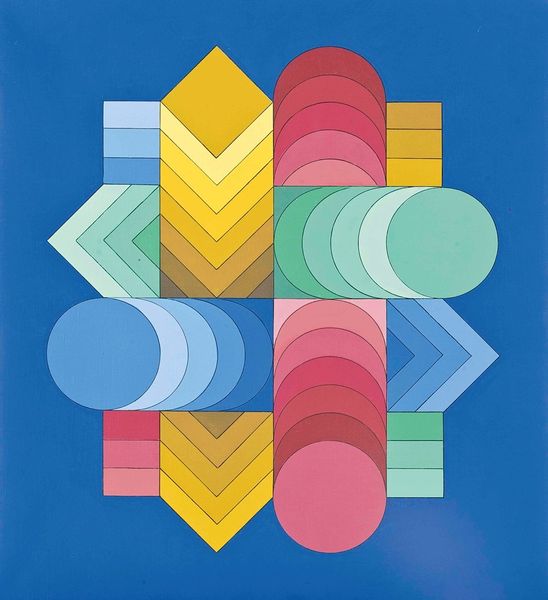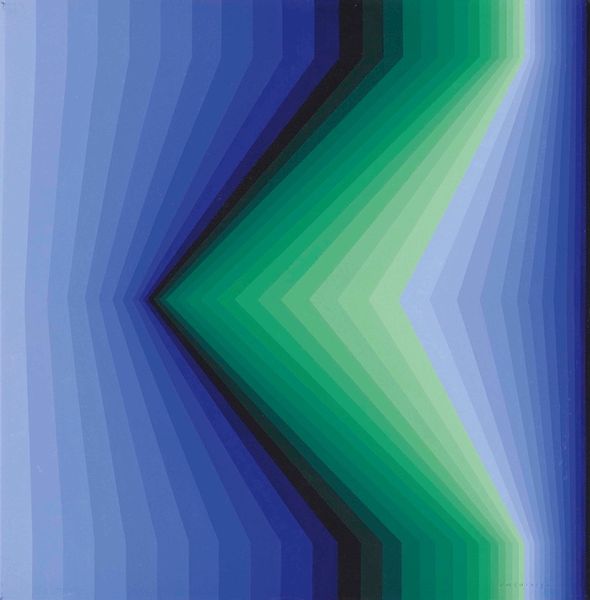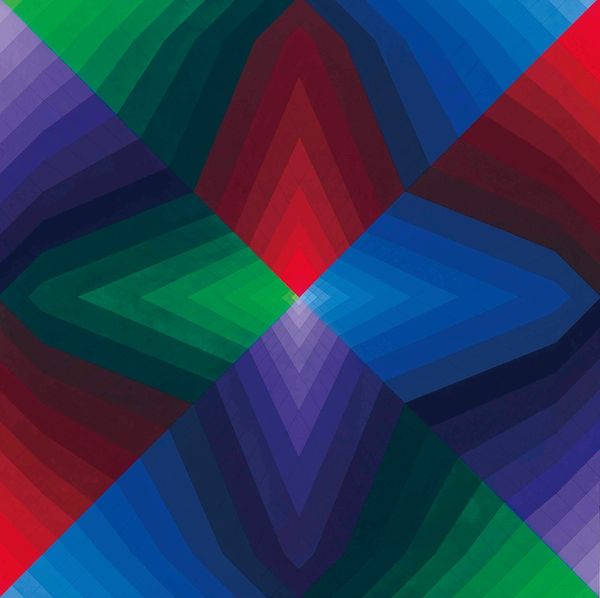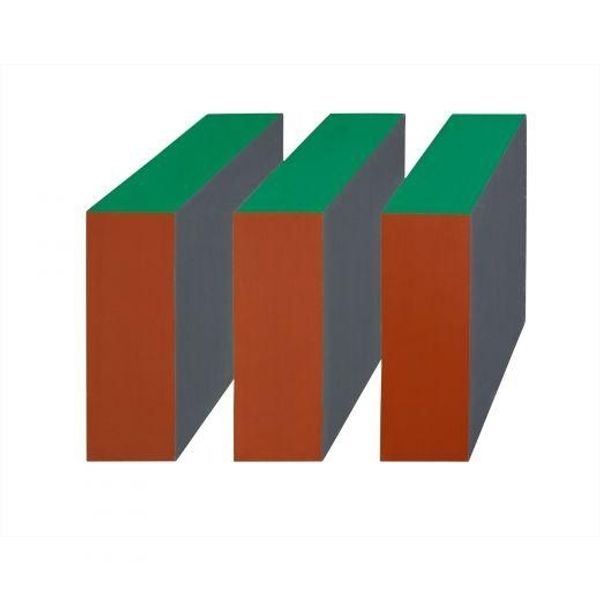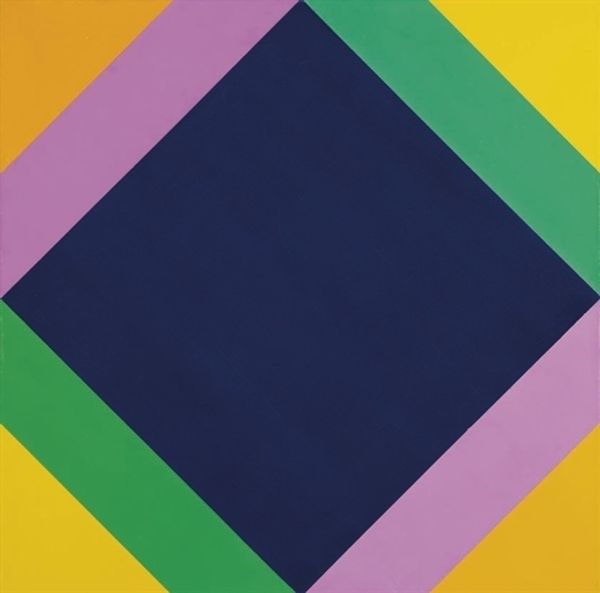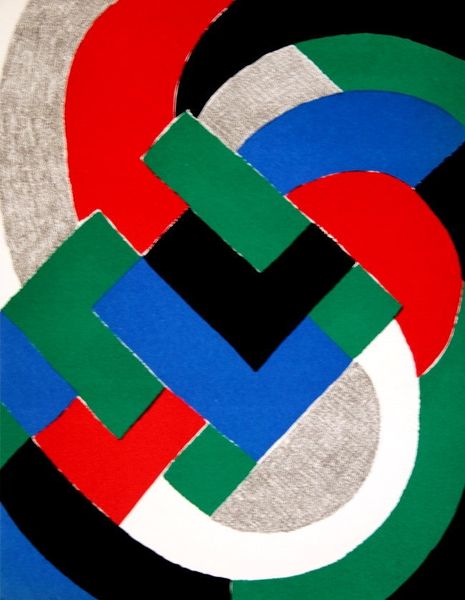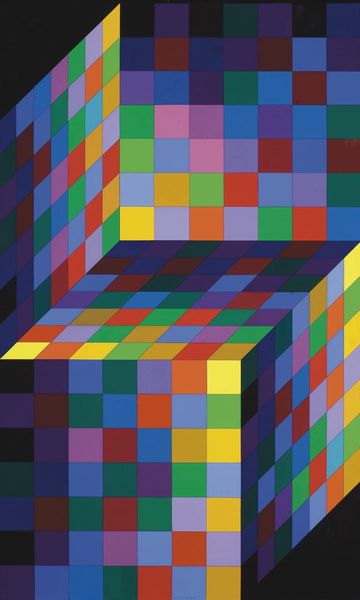
acrylic-paint
#
non-objective-art
#
op-art
#
postmodernism
#
acrylic-paint
#
abstract
#
geometric pattern
#
repetitive shape and pattern
#
minimal pattern
#
geometric
#
geometric-abstraction
#
repetition of pattern
#
vertical pattern
#
abstraction
#
clothing photo
#
pattern repetition
#
imprinted textile
#
layered pattern
#
combined pattern
Copyright: Modern Artists: Artvee
Editor: Here we have Victor Vasarely’s “RAG-I” from 1979, created with acrylic paint. The interplay of colors forming these geometric shapes is really striking. How do you interpret this work? Curator: What strikes me is how Vasarely, even within the realm of Op Art and geometric abstraction, is making a statement about perception and the constructed nature of reality. Given the sociopolitical climate of 1979, do you think there might be commentary here about how systems—governments, ideologies—shape our understanding of the world, often through manipulation of perspective and repetition? Editor: That's an interesting point, framing it within its historical context. I was initially just seeing cool shapes, but I can now see how repetitive shapes may symbolize sociopolitical control through visual distortion. I wonder if it suggests any possible resistance against such power dynamics, and how? Curator: I think the resistance, if any, is subtle. Perhaps in the insistence on abstraction itself. By refusing to depict recognizable figures or narratives, Vasarely resists easy categorization or appropriation by dominant ideologies. He presents a reality that is open to interpretation, a challenge to the viewer to actively engage in the construction of meaning. Do you find this opens opportunities for you to reflect about reality in postmodernist discourse? Editor: Yes, absolutely. Thinking about it now, it's not just about the shapes themselves, but how they challenge my assumptions about how I see the world, even encouraging critical self-reflection within me. Curator: Exactly! Vasarely offers not just an aesthetic experience but also a moment for critical self-awareness. That makes art history and visual culture so vital for us today! Editor: Thanks, that perspective helps see beyond the visual, recognizing artwork as historical discourse.
Comments
No comments
Be the first to comment and join the conversation on the ultimate creative platform.
